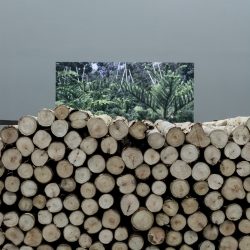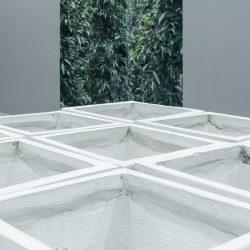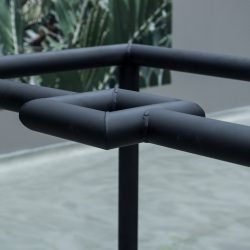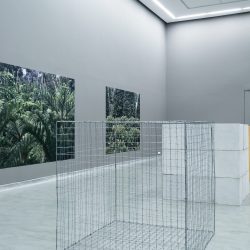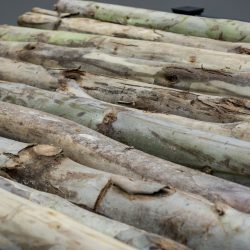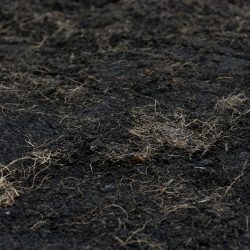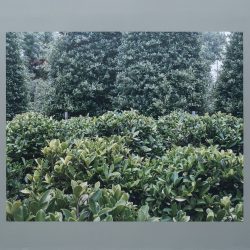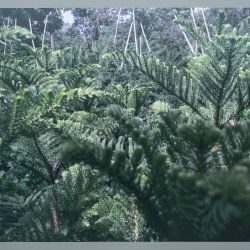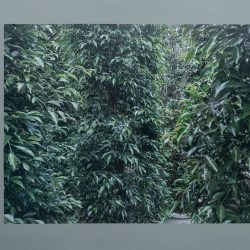SINGAPORE-BASED ANG SONG NIAN’S PHOTOGRAPHY AND INSTALLATIONS SHOW US JUST HOW TREES ARE MANIPULATED TO FIT INTO BANGKOK’S LANDSCAPE
Removing trees from the forest and planting them in pots – breeding and selling them in the market – growing them and fooling yourself that it is nature you’re looking at. The aforementioned is the basic timeline of us humans’ attempt to reproduce nature and the origin of the presence of trees in residential spaces, roads and streets in a town or a city that Singaporean photographer Ang Song Nian views as a contradicting act of the phrase “be respectful to nature” that we often hear.
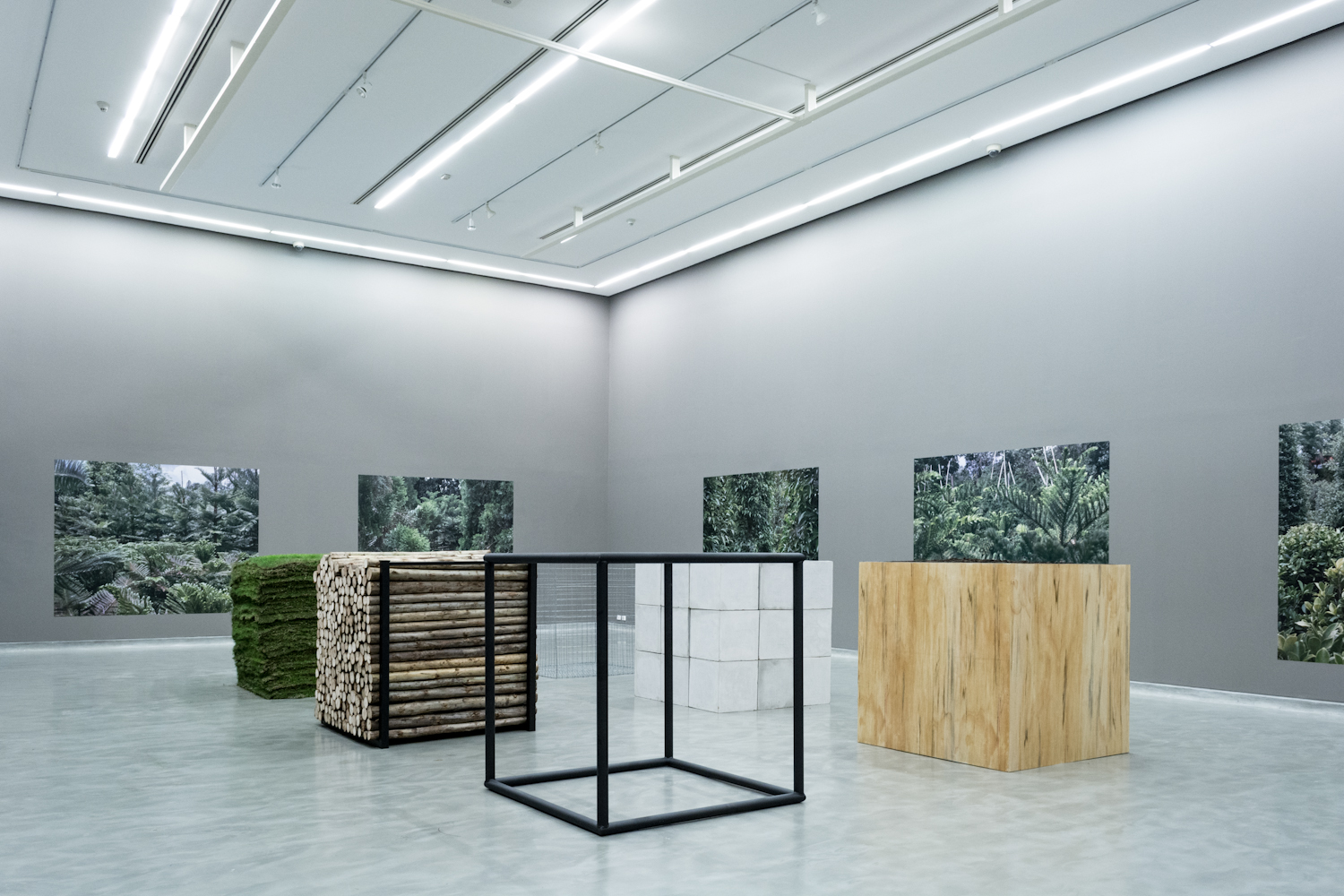
‘As They Grow Older and Wiser,’ photography exhibition and ‘Everything Can Be Measured,’ installation by Ang Song Nian, Photo by Napat Charitbutra
The artist spent three months of his residency at Bangkok University Gallery observing the patterns of trees growing in the urban area and plant nursery at Nanthawan Garden (Nokhon Nayok province). Ideas were later developed into the exhibition of photography, ‘As They Grow Older and Wiser,’ which is comprised of two series of works: ‘As They Grow Older and Wiser’ (photography) and ‘Everything Can Be Measured’ (installation). The artist’s presentation of the landscape of a tree market through eight different images creates the realistic surroundings of nature in the exhibition space with a narrowed focus on the densely packed cluster of timbers while deliberately leaving traits of contamination such as the ropes used to wrap the branches, concrete pots and bamboo sticks that keep the trunks stable, etc. Viewers are made aware (sooner or later) that the images they are seeing are actually a depiction of artificial nature at a tree market. Another interesting issue that may not be directly conveyed by the photography but is successfully brought forward by the installation is humans’ ‘control over nature.’
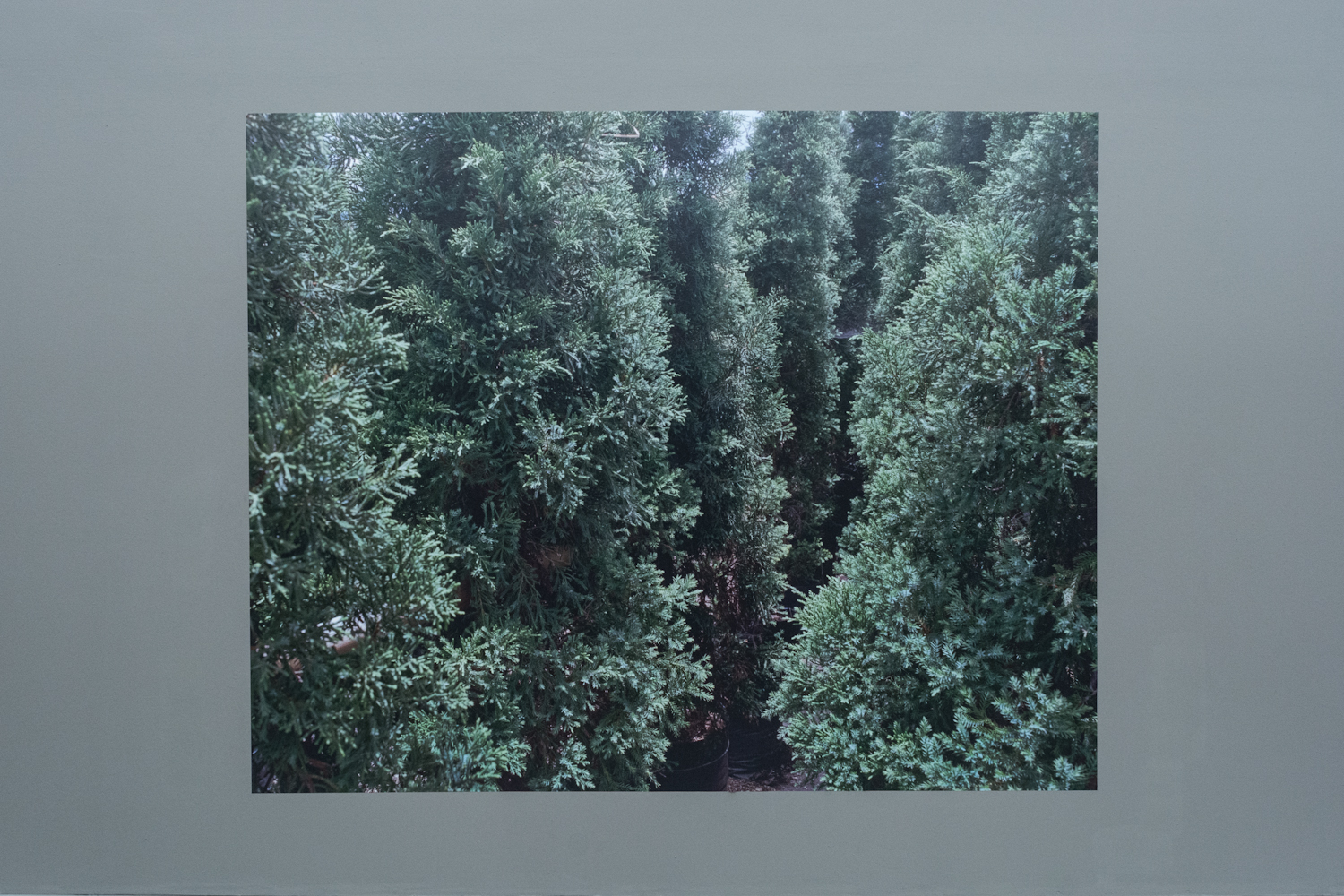
‘As They Grow Older and Wiser,’ photography exhibition by Ang Song Nian, Photo by Napat Charitbutra
The cubical shape used as the logo found on the exhibition pamphlet possibly, in one way or another, implies the notion of ‘control’ or ‘manmade fabrication.’ The repetitive use of the form can be found in every piece of the installation where gardening equipment (soil, bamboo poles, turf, steel support structures, wire structures and concrete pots) are stored/formed into six different cubical boxes installed to stand in one row in the middle of the exhibition space. Whether intentionally or not, the equal spacing between each cube divides the gallery’s space into a 3×3 grid as their presences contribute a certain vibe to the surroundings, reflecting a sense of control over the environment.
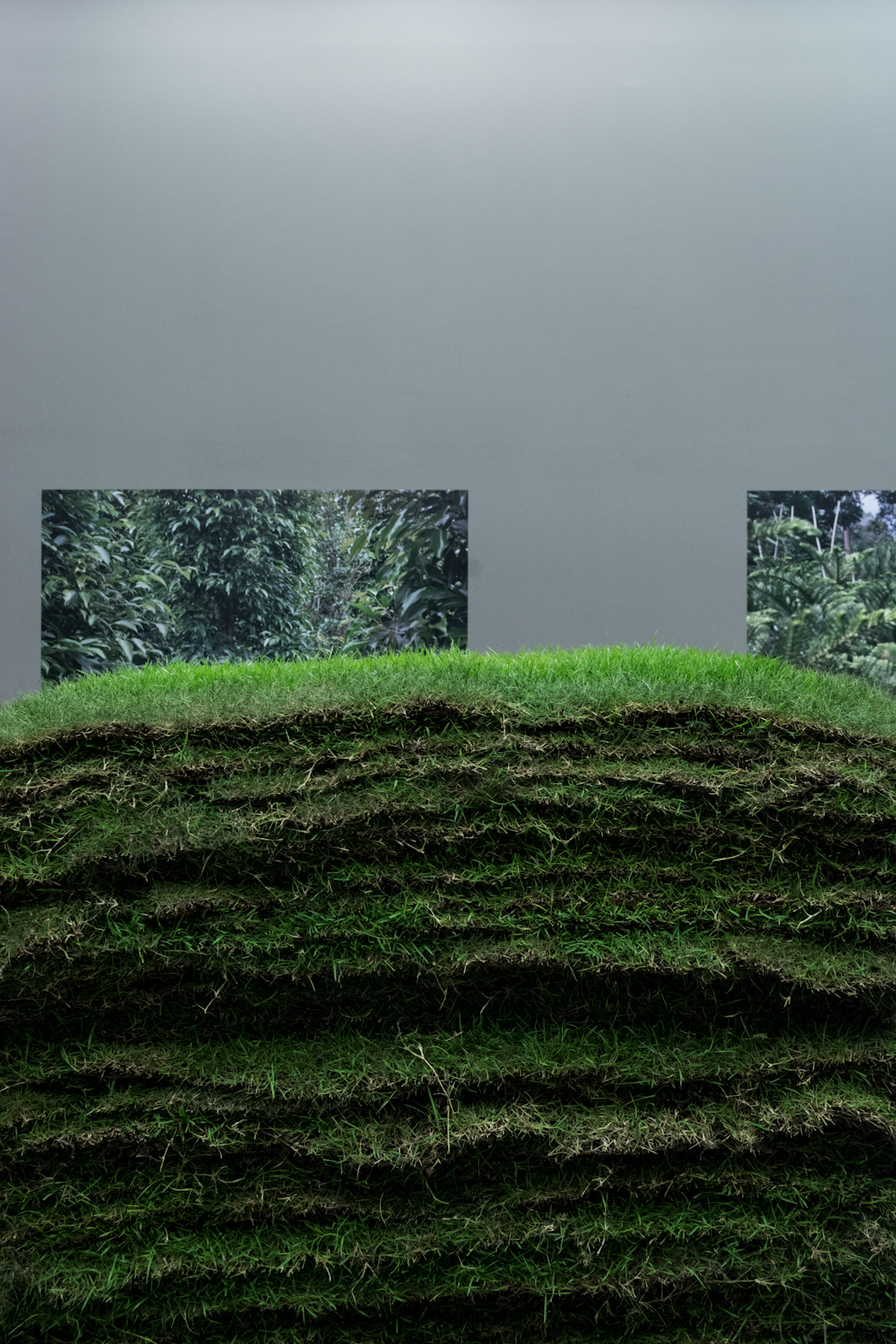
‘Everything Can Be Measured,’ installation by Ang Song Nian, Photo by Napat Charitbutra
An upside of this residency project is how it offers us viewers a chance to gain new perceptions where someone from a different culture raises new aspects of issues or questions those solutions and answers we may become too familiarized with. It may sound surprising to view a reproduction of nature that aims to expand the perimeter of the green space as disrespectful to nature, but for Ang Song Nian, a photographer who grew up in a country such as Singapore where nearly the entirety of green spaces are man-made (to the point where unnatural becomes natural), the control and simulation of nature turns out to be both complex and an issue that is, understandably and reasonably, solid. For this exhibition, one might have to empathetically approach the works as someone whose entire life has been surrounded by artificial nature.
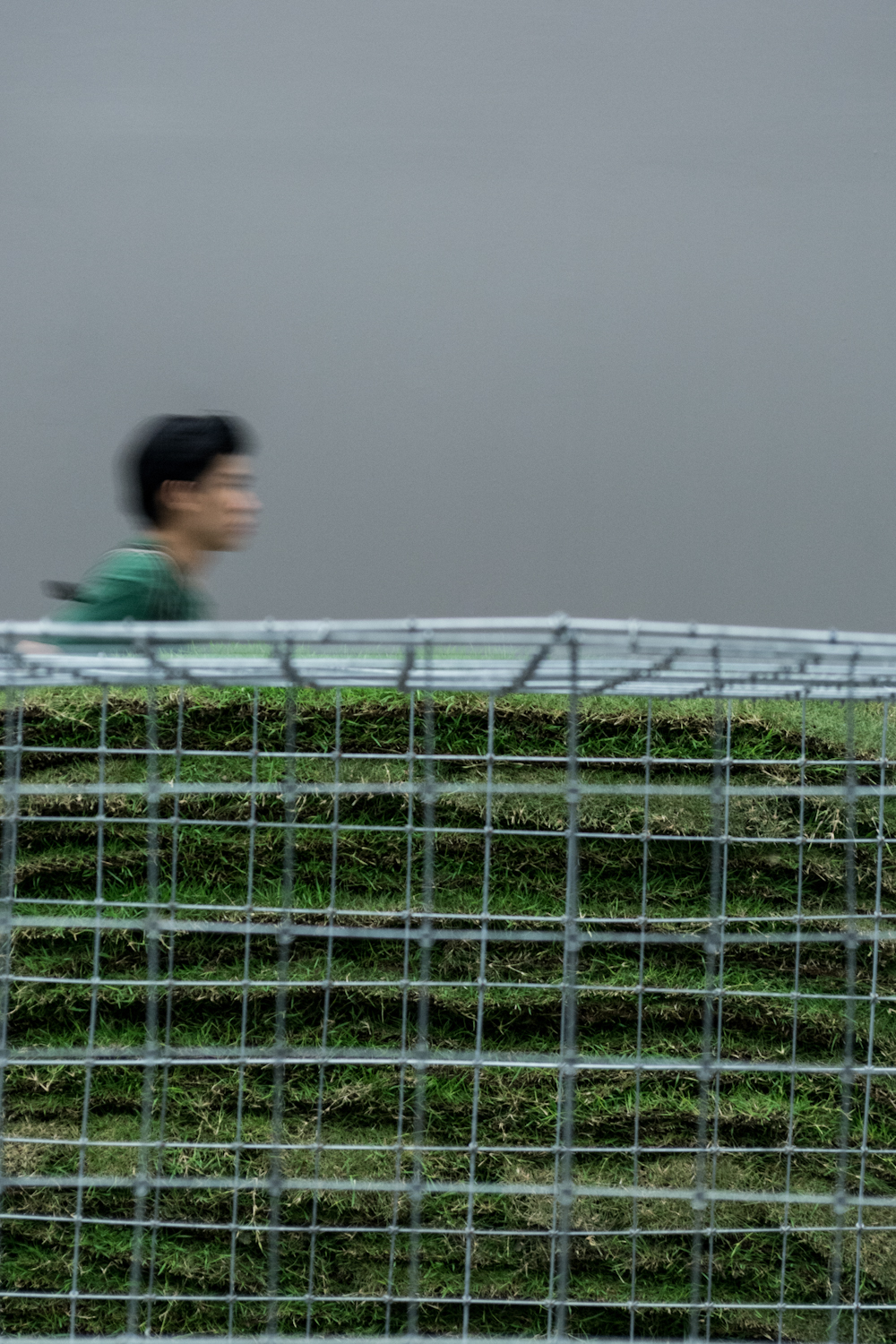
‘Everything Can Be Measured,’ installation by Ang Song Nian, Photo by Napat Charitbutra
TEXT: NAPAT CHARITBUTRA
www.facebook.com/bangkokuniversitygallery




